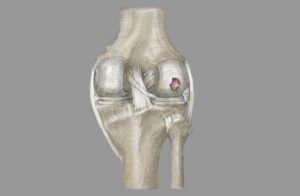The field of radiology plays a pivotal role in modern healthcare, providing crucial diagnostic information to guide patient care. However, alongside its critical role comes a complex web of medical billing challenges that can hinder the efficiency and profitability of radiology practices. Automation is emerging as a game-changer in addressing these challenges and streamlining the billing process in radiology. In this article, we will delve into the various challenges faced by radiology practices and explore how automation can offer innovative solutions to overcome them.
The Complex Landscape of Radiology Billing
Understanding the Billing Challenges
Radiology billing is far from straightforward. It involves intricate coding, documentation, and compliance with ever-evolving regulations. To gain a comprehensive perspective on how automation can revolutionize radiology billing, we first need to dissect the challenges faced by radiology practices.
- Coding Complexity: Radiology procedures are categorized into various Current Procedural Terminology (CPT) codes, each with specific requirements for documentation and billing. The complexity of these codes can lead to errors, claim denials, and revenue loss.
- Regulatory Changes: Healthcare regulations, including those related to billing and reimbursement, frequently change. Radiology practices must stay up-to-date with these changes to ensure compliance. Failure to do so can result in penalties and revenue loss.
- Data Entry Errors: Manual data entry is prone to errors, which can lead to incorrect billing and payment delays. These errors can be costly and time-consuming to rectify.
- Claim Denials: Radiology practices often face claim denials due to incomplete or inaccurate documentation. These denials can result in delayed payments and increased administrative burden.
- Revenue Leakages: Unbilled or underbilled services can lead to significant revenue leakages. Identifying and rectifying such leakages can be challenging without automation.
Also Read:
- Innovative Approaches for Optimizing Hospital Capacity
- 7 Pillars of Healthcare & Medical Billing and Coding
The Automation Revolution in Radiology Billing
Harnessing the Power of Automation
Automation offers innovative solutions to the challenges faced by radiology practices in medical billing. Let’s explore how automation can revolutionize radiology billing processes.
- Efficient Coding Assistance:
- AI-Powered Coding: Artificial intelligence (AI) can assist radiologists in coding by analyzing clinical notes, images, and other patient data to suggest appropriate CPT codes. This reduces the risk of coding errors and claim denials.
- Real-time Coding Guidance: Automation can provide real-time coding guidance to radiologists as they document procedures. This ensures that procedures are coded correctly from the outset, reducing the need for later corrections.
- Regulatory Compliance:
- Automatic Updates: Automated systems can seamlessly integrate with regulatory databases to ensure that billing practices are always in compliance with the latest regulations. This reduces the risk of non-compliance penalties.
- Documentation Assistance: Automation can prompt radiologists to include required documentation elements, ensuring that claims are complete and compliant with regulatory requirements.
- Error Reduction:
- Data Validation: Automated systems can validate data entries in real time, flagging potential errors before claims are submitted. This reduces the likelihood of billing errors and subsequent claim denials.
- Electronic Health Record (EHR) Integration: Integration between billing systems and EHRs ensures that patient information is transferred accurately, reducing data entry errors.
- Streamlined Claims Management:
- Claims Scrubbing: Automation can perform automated claims scrubbing to identify and rectify errors before claims are submitted. This leads to faster claim processing and reduced denials.
- Claim Tracking: Automated systems can track the status of claims in real time, allowing practices to proactively address any issues or delays.
- Revenue Optimization:
- Identification of Unbilled Services: Automation can identify services that have not been billed, reducing revenue leakages. It can also analyze underpayments and recommend actions to optimize revenue.
- Efficient Payment Posting: Automated payment posting processes streamline the reconciliation of payments with claims, reducing manual efforts and errors.
Challenges in Implementing Automation
Overcoming Implementation Hurdles
While automation holds great promise for radiology billing, there are challenges that practices may encounter during the implementation phase.
- Cost of Implementation: Implementing automation systems can require a significant initial investment. However, it’s essential to view this as a long-term investment that can yield substantial returns in terms of improved efficiency and revenue optimization.
- Training and Adoption: Radiology staff may require training to adapt to new automation tools and workflows. Ensuring that staff members are comfortable and proficient with the new systems is crucial for success.
- Integration with Existing Systems: Integrating automation solutions with existing EHR and practice management systems can be complex. Careful planning and expertise needed to ensure a seamless integration process.
- Data Security: Automation systems handle sensitive patient data. Ensuring robust data security measures is vital to protect patient information and comply with healthcare privacy regulations.
Conclusion
The challenges of medical billing in radiology are multifaceted, but automation is emerging as a powerful ally in overcoming these obstacles. By harnessing the capabilities of AI and automation tools, radiology practices can streamline their billing processes, reduce errors, ensure regulatory compliance, and optimize revenue. As automation continues to evolve, it is poised to revolutionize the way radiology practices manage their billing operations, ultimately enhancing patient care and financial sustainability. Embracing automation in radiology billing is not just a technological upgrade; it’s a strategic investment in the future of healthcare.
In an era of rapid advancements in healthcare technology, radiology practices must stay ahead of the curve to remain competitive and provide the best possible care to their patients. Automation is not merely a convenience but a necessity in addressing the complex challenges of medical billing in radiology. As the healthcare landscape continues to evolve, the role of automation in radiology billing will only become more pronounced, ensuring that radiology practices can thrive in an increasingly complex and competitive environment.









